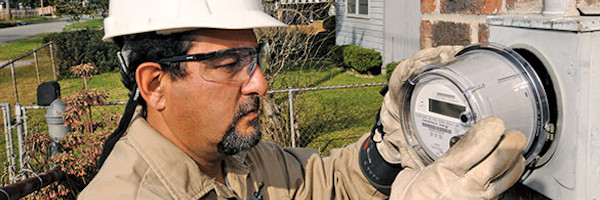Leveraging Existing Automated Meter Reading for a Smart Alert Response Technology
| Leveraging Existing Automated Meter Reading for a Smart Alert Response Technology | |
|---|---|

| |
 Automated Meter Reading | |
| Team Organizations | Motorola Utility Systems Solutions and Software (US3) |
| Team Leaders | Mark Serres Kreg Christoff |
| Participating Municipalities | Houston TX |
| Status | Launched |
| Document | None |
Description
The City of Houston is 10,062 square miles (26,060 km²), with 6,950 miles (11,184 km) of sewer pipeline ranging in size from 6 to 144 inches (15 to 365cm) in diameter and including approximately 123,000 manholes. Houston uses the Automated Meter Reading (AMR)/Advanced Meter Infrastructure (AMI) network for identification and mitigation of Sanitary Sewer Overflows as part of the City's system-wide operation, maintenance and management plan. Houston calls this plan AIM (Automated Infrastructure Monitoring).
Challenges
Sensors exist for the identification of an impending sewer overflow. The challenge is to communicate the real-time data in a timely manner (minutes) to the team that will mitigate the problem. This needs to be accomplished in an affordable manner.
Solutions
The solution involves use of existing AMR/AMI water meter networks, combined with high security Cloud based applications, such as Azure. Together, these can be leveraged to deliver real-time data into our SCADA system for integrated monitoring and alerting of time-critical information.
Major Requirements
- High level cooperation from both Fresh and Wastewater Operations management.
- High level cooperation from Wastewater Maintenance, IT and SCADA personnel.
- Supplier willingness to provide information on how to integrate their hardware/network in a non-traditional application.
- A competent Systems Integrator motivated to make city infrastructure smarter.
- Systems Integrator willingness to work with multiple hardware/software/network providers to produce a uniform and long term maintainable system.
Performance Targets
| Key Performance Indicators (KPIs) | Measurement Methods |
|---|---|
|
Every SSO is recorded and documented thoroughly, from the estimated volume of the spill to the suspected cause. Every SSO is reported to the Environmental Protection Agency (EPA). |
Standards, Replicability, Scalability, and Sustainability
- The success of Houston’s AIM program relies entirely on the utilization of the existing AMR/AMI networks. Further, by incorporating the data into standardized Cloud based databases, the City has effectively eliminated any interoperability issues. Virtually every component of the system is off-the-shelf and not tied to one vendor or another.
- Houston’s AIM program can be replicated by any City that has an AMR system or low power, wide area network technology. Sustainability can only be achieved if City departments work together to make their city brilliant.
Cybersecurity and Privacy
TBD
Impacts
- Significant reductions or elimination of SSO conditions will reduce the impact on the City budget, while providing the Citizens of Houston a safe environment to live.
- Now the goal is apply this technology to combustible gas & water monitoring for underground transformers, water pressure monitoring, water quality monitoring (pH, turbidity, etc), storm water monitoring, emergency diesel/propane tank monitoring, City Wide flood monitoring and alerting.
Demonstration/Deployment
The system demonstrated at the GCTC Expo will not a be a Demo, but rather the working live system.